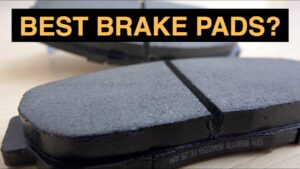Engine oil, an essential component of the vehicle. After all, it helps in maintaining smooth and comfortable driving with proper lubrication within every part. Have you ever thought about the benefits or needs of increased oil pressure in vehicles? If no, then here we are going to discuss it in details  Here, in this article, we will deal with and talk about how to increase oil pressure at idle along with certain frequently asked questions related to the topic. So, let’s begin with the topic and attain the desired result.
Here, in this article, we will deal with and talk about how to increase oil pressure at idle along with certain frequently asked questions related to the topic. So, let’s begin with the topic and attain the desired result.
Table of Contents
What Is High Oil Pressure?
 The higher your rotation per minute (rpm), the higher is the oil pressure. But it is applicable or valid up to the point where an extra valve detours the excess oil back to the oil pan to recirculate. The high-pressure reading on the gauge means the oil is too viscous.
The higher your rotation per minute (rpm), the higher is the oil pressure. But it is applicable or valid up to the point where an extra valve detours the excess oil back to the oil pan to recirculate. The high-pressure reading on the gauge means the oil is too viscous.
How To Increase Oil Pressure At Idle?
Oil pressure at idle plays an important role in maintaining and functioning the vehicle. Oil is regarded as the lifeblood of an engine, and every moving component inside the engine is designed to operate on a cushion of oil.
The principle behind the running of the engine and the requirement of oil pressure works simply. The faster you drive, thus, the faster you turn the engine i.e., the more oil pressure you need to provide the same level of lubrication.
However, there are certain ways to improve the oil pressure if you are willing to spend some time and have little mechanical ability. Thus, follow all the steps sequentially and soon you’ll be able to increase oil pressure at idle as per your requirement.
Step 1:
 First of all, prepare or ready your car to perform the procedure. Now open the hood of the vehicle but before that apply the parking brakes for safety purposes and to avoid any mishap.
First of all, prepare or ready your car to perform the procedure. Now open the hood of the vehicle but before that apply the parking brakes for safety purposes and to avoid any mishap.
Next, raise the front portion of the car with the help of a jack and place the jack stands under the chassis. After this, lower the car onto the stand for carrying out further steps.
Step 2:
 After completing all the points mentioned above, begin with the next step. Here, you need to drain the oil. For this, place a catch pan under the oil pan drain plug and remove the drain plug with the help of a wrench. Now allow some time for the oil to drain into the pan. Simultaneously, change the oil filter and utilize the time.
After completing all the points mentioned above, begin with the next step. Here, you need to drain the oil. For this, place a catch pan under the oil pan drain plug and remove the drain plug with the help of a wrench. Now allow some time for the oil to drain into the pan. Simultaneously, change the oil filter and utilize the time.
Now, place the catch pan under the oil filter and remove the filter using an oil filter wrench. It’s an easy go process if you follow step by step therefore be calm, active, and focus properly.
Next, allow the filter to drain into the pan. Moving on, place a drop of oil around the rubber gasket makes contact with the pad, tighten it to three-quarters of a turn by using the hands. Remove the catch pan and dispose of the used oil along with the filter in an appropriate manner.
Step 3:
 Next, soon after disposing of the used oil and filter, loosen the oil pan to continue the process further. You can do this with the help of a socket, thus, loosen and remove the bolts from the perimeter of the oil pan.
Next, soon after disposing of the used oil and filter, loosen the oil pan to continue the process further. You can do this with the help of a socket, thus, loosen and remove the bolts from the perimeter of the oil pan.
Now, pull the oil pan to remove it and place it off to the side in a clean and clear location. Remove the oil pump with the help of or using a wrench. Further, drop the oil pump from the oil pump mount.
Step 4:
 Here, in this step, you need to replace the oil pump and place the new pressure oil pump onto the pump mounting pad. Also, replace the retaining bolt. Tighten the bolt with the help of a wrench.
Here, in this step, you need to replace the oil pump and place the new pressure oil pump onto the pump mounting pad. Also, replace the retaining bolt. Tighten the bolt with the help of a wrench.
Next, remove the oil pick-up from the old oil pump by removing the retaining bolt using the wrench. Anyways, after completing these steps, re-install the pick-up on the new oil pump and tighten the bolt by using the wrench.
Step 5:
 It is the last step of the procedure, here you need to replace the oil pan and scrape the old gasket off of the pan with the help of a gasket scraper. Once you are done with it and also clean the area then apply a bead of gasket sealer around the edge of the pan and set the new gasket in place.
It is the last step of the procedure, here you need to replace the oil pan and scrape the old gasket off of the pan with the help of a gasket scraper. Once you are done with it and also clean the area then apply a bead of gasket sealer around the edge of the pan and set the new gasket in place.
Now, leave the gasket for few minutes and place the oil pan against the bottom of the engine block. Also, reinstall the bolts by hand and finger tighten them.
At last, add the oil and raise the car off of the stands with the jack and remove the stands. Now, lower the vehicle slowly and remove the jack properly. Check the oil leaks if present by starting the engine. Next, shut the engine and shut the hood.
Will Thicker Oil Increase Oil Pressure?
To a certain limit, the answer is yes. The thicker oil will increase the oil pressure but on other hand will reduce the engine horsepower. Excessive oil pressure may create few other issues like it may lead to an explosion of oil filter, damaged seals, blow out oil passage plug, or may even affect the bearing of the engine.
Is Thicker Engine Oil Better?
Thicker engine oil generally seals better and maintains a good firm of lubrication between the moving parts. Often, the 5W is recommended for winter use. However, at a low-temperature end, oil has to be resistant to the thickening so that it flows more easily to all the moving parts in your engine.
Conclusion
We hope the information mentioned above help and guide all the readers to deal with the issues they were facing, however, we also expect that by the end of the content you know how to increase oil pressure at idle.
If your doubts or queries regarding the matter persist, please comment below in the comment section. And we’ll surely make an effort to answer all your questions as quickly as possible.


